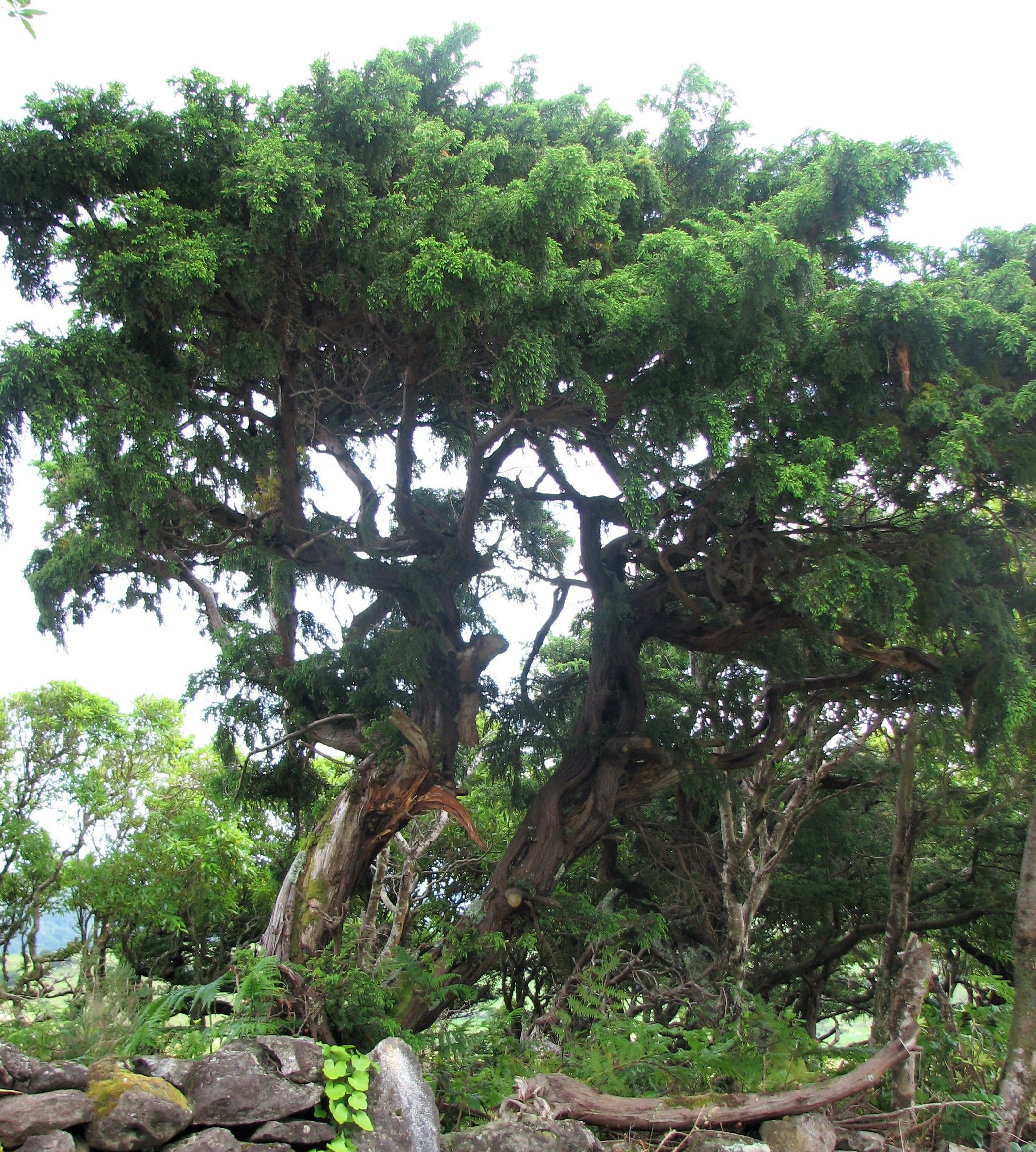- Juniperus brevifolia
Taxobox
name = "Juniperus brevifolia"

image_width = 240px
image_caption = Specimen on Flores, Azores
status = EN | status_system = IUCN2.3
regnum =Plant ae
divisio =Pinophyta
classis = Pinopsida
ordo =Pinales
familia =Cupressaceae
genus = "Juniperus "
species = "J. brevifolia"
binomial = "Juniperus brevifolia"
binomial_authority = (Seub.) Antoine"Juniperus brevifolia" (Azores Juniper) is a species of
juniper , endemic to theAzores (on Corvo, Faial, Flores, Pico, Santa Maria, São Jorge, São Miguel, and Terceira), where it occurs at altitudes of 240-800 m, rarely up to 1,500 m. It is closely related to "Juniperus oxycedrus " (Prickly Juniper) of theMediterranean region and "Juniperus cedrus " (Canary Islands Juniper) of theCanary Islands . It is threatened byhabitat loss .Adams, R. P. (2004). "Junipers of the World". Trafford. ISBN 1-4120-4250-X] Farjon, A. (2005). "Monograph of Cupressaceae and Sciadopitys". Royal Botanic Gardens, Kew. ISBN 1-84246-068-4] [Conifer Specialist Group 1998: [http://www.iucnredlist.org/search/details.php/30326/all "Juniperus brevifolia"] ]It is a
shrub or smalltree growing to a height of 6 m and a trunk diameter up to 50 cm. The leaves areevergreen , needle-like, in whorls of three, glaucous green, 4-10 mm long and 1-3 mm broad, with a double whitestoma tal band (split by a green midrib) on the inner surface. It is dioecious, with separate male and female plants. The seed cones areberry -like, green ripening in 18 months to orange-red with a variable pink waxy coating; they are spherical, 6-9 mm diameter, and have three or six fused scales in one or two whorls of three, the three larger scales each with a singleseed . The seeds are dispersed whenbird s eat the cones, digesting the fleshy scales and passing the hard seeds in their droppings. The male cones are yellow, 2-3 mm long, and fall soon after shedding theirpollen in early spring.It is endangered in its native range due to a combination of historical felling for the valuable wood and competition from invasive introduced plants.
References
Wikimedia Foundation. 2010.
